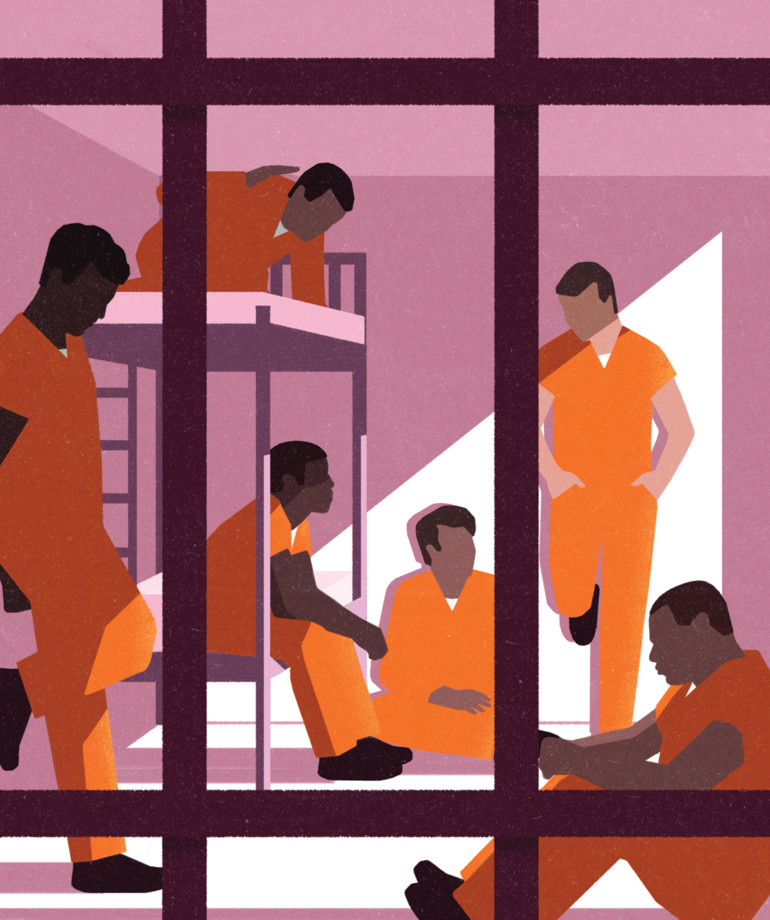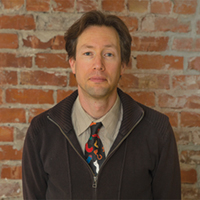Quentin, the namesake of San Quentin, was not a saint. But, fittingly enough, he was a prisoner.
In 1824, Quentin (or Quintin), a right-hand man of the Coast Miwok Licatuit tribe’s Chief Marin, was taken in battle during a failed revolt against the mission system. He was transported in chains to Mission Dolores, but his incarceration was brief: two years, “at the end of which he was set at liberty, there being no longer any doubt the whites could rely on his promises,” California honcho Mariano Guadalupe Vallejo told the Marin Journal in December 1874.
The rocky outcropping where Quentin suffered his defeat and capture became known as “Punta de Quintin,” and, later, “Punta de San Quentin.” Why the ersatz canonization? Vallejo politely told the Marin newspaper that Anglos simply thought Latins put “San” in front of every place name.
So it was an odd concatenation of events that led to this land and prison being named after this non-saint. And the oddness continues. Nearly 200 years after Quentin’s loss on the battlefield, the prison named after him and built atop the land where he surrendered his freedom houses more than 4,000 inmates in a facility designed to hold only 3,000. Up and down this state, more than 125,000 men and women are incarcerated — just a shade fewer than all the prisoners incarcerated in France and Germany, which together have four times California’s population.
California, self-styled capital of the resistance, is still locking people up at an alarming rate. Even lifelong state residents may be shocked to learn that between 1976 and 2006, our prison population skyrocketed from a shade over 21,000 to roughly 173,000. And while the state’s prison population is now declining, it’s still orders of magnitude higher than in the not-too-distant past (when law-and-order Republicans were politically relevant and actually ascendant — yet even then we locked up far fewer people).
California’s decade-long inmate population decline, incidentally, came only after the U.S. Supreme Court in 2011 affirmed that conditions in the state’s overcrowded prisons were so bad it constituted “cruel and unusual punishment,” with an inmate “dying needlessly every six or seven days.”
Cruel and unusual or not, our prisons are certainly costly. Twenty-one have been built since 1985 alone; decommissioning any of them remains a political pipe dream. This summer, our (Democratic) Legislature and (Democratic) governor handily approved a new contract awarding our state’s prison guards a raise. That added an estimated $195 million to the $5.7 billion this state was already putting into guard salaries — far and away the highest category of state salary spending.
The raise was approved 34–4 in the Senate and 75–0 in the Assembly. Democrats hold 90 of the 120 seats. A California Legislative Analyst report bluntly stated there was “no evident justification” for this raise.
“Most public-sector unions are pretty steadily Democratic,” notes Joshua Page, a University of Minnesota sociology professor and author of The Toughest Beat, a pioneering analysis of California’s prison guard union. “But the CCPOA is bipartisan. They’re perfectly happy to prop up Democrats or Republicans. Or take them out.”
In 2011, the California Correctional Peace Officers Association infamously posted a video on its website boasting that “of the 107 candidates endorsed by CCPOA this election, 104 were victorious.” (Following media scrutiny, the CCPOA took that video down.)
The California prison guard union, incidentally, was born in Marin at San Quentin. That was in 1957, and according to Page, the guards were disgusted that an obit for a colleague who’d killed himself noted that he had earned less than the guppy keepers at San Francisco’s Steinhart Aquarium. In 1957, fewer than 17,000 men and women were incarcerated in California, and the nationwide total of 195,000 prisoners was only slightly higher than the tally would be in California alone several generations later.
Both Page and John Pfaff, a Fordham University law professor and author of Locked In: The True Causes of Mass Incarceration and How to Achieve Real Reform, say the role of prison guard unions in the nation’s imprisonment of some 2.3 million Americans has been overstated. (Not in California, however. They really are that powerful here, as have been the victim’s rights groups they founded and funded.)
Page sees the relationship between the guard union and California’s mass incarceration as symbiotic, rather than a situation in which the former triggered the latter. “The CCPOA really gained their power in the mid-1990s,” he says. “But what we think of as mass incarceration started taking off in the ’80s.” Between 1982 and 1992, the union’s membership roughly tripled, from 5,000 to 15,000. By 2002, that number had doubled again, to some 30,000. It’s now closer to 40,000. “They were right there when some of the most important legislation came around,” Page says. “As the tough-on- crime regime was taking off, they really helped solidify it.”
And, lately, entrench it.
In many ways, California’s drive to mass incarceration — and cruelly and unusually crowded prisons — mirrored the nation’s. But, this being California, we did it bigger.
To start with, the rise in America’s prison population coincided with a rise in crime. The nation’s current crime levels are dwarfed by those of the 1970s and ’80s — but, in turn, dwarf those of earlier decades. And yet, Pfaff points out, incarceration levels shot to infinity and beyond in the 1990s, even as crime began to decline.
Why? Partly because Americans react to crime and punishment on an emotional rather than a wholly rational level. For decades, no politician suffered for espousing a tough-on-crime message. And in California, with our well-oiled direct democratic system, we got to vote on a lot of it.
As such, in 1994 we approved Proposition 184, our “three strikes” law. And in case you’re wondering, there is no scientific reason why a third felony ought to trigger a lengthy sentence. “They literally thought it was catchy because of the baseball analogy,” Page says. (In our national pastime’s primordial days, it actually required four strikes to register an out; had that rule stuck, the ramifications on the criminal justice system could’ve been significant.)
Prior to a 2012 ballot proposition, that third strike — triggering a mandatory term of at least 25 years — needn’t even have been a violent felony. California’s was one of the harshest three-strikes laws in America; UC Berkeley law professor Franklin Zimring estimates our state was responsible for more than 90 percent of three-strikes sentences nationwide.
The “tough on crime” attitude extends to the death penalty as well. After a failed effort by voters to abolish the death penalty in 2016, Gov. Gavin Newsom announced a moratorium on it in March, citing its high cost among other factors. But the question remains open: the California Supreme Court has refused to block capital cases, and San Quentin’s death house may yet be re- assembled under a future administration.
So, we voted for all that. And we voted for district attorneys who prosecuted more and more cases as felonies. California DAs became immensely more powerful when “determinant” sentencing became state law in 1977. Open-ended sentences (indeterminate sentences with no fixed time spelled out) were largely curtailed, and prosecutors, rather than judges, were essentially given control of sentencing decisions — right in the midst of a national crime wave.
“That put a ton of power in the hands of prosecutors,” Page says. “They could use severe sentencing laws to hammer people and get plea bargains.” And 19 out of 20 criminal cases are handled via plea bargains.
The pendulum has only begun to swing the other way. But it’s not swinging commensurately hard. Proposition 47 in 2014 reclassified nonviolent property crimes as misdemeanors, and California has, for all intents and purposes, legalized marijuana, but as Pfaff has written extensively, undoing the misbegotten legacy of the drug war, while potentially meritorious, will not make much of a dent in the prison population totals.
You might be surprised to learn that only around 15 percent of America’s prisoners are doing time for a drug rap; polls reveal Americans guess it’s closer to 50 percent.
A full 25 percent of American inmates, however, are in for murder, sexual assault or manslaughter. Around 55 percent, Pfaff has found, are imprisoned for violent crimes.
And this is where the story of Quentin — the man, not the prison — may be illustrative. He was imprisoned for the violent crime of taking up arms in an insurrection. But he was, for good or ill, rehabilitated. He was released after a sane amount of time served. He subsequently earned a living sailing General Vallejo’s barge from Sonoma to Yerba Buena, later known as San Francisco.
No real solution to prison overcrowding can be accomplished merely by ushering out nonviolent and/or drug criminals. At some point, Pfaff notes, you’re going to have to take a different approach to violent crime and violent felons. And that’s a politically fraught thing to do. Even in a state where the Democratically controlled Legislature didn’t just vote by a 109–4 count to give the prison guards raises without any “evident justification.” As this one did.
“In a general sense, we’re very supportive of criminal justice reform,” says San Francisco state Sen. Scott Wiener, one of the four lawmakers to vote against the guards’ raises. “But when we get to specific proposals” — and with this, he sighs — “the politics get very hard.”
Joe Eskenazi was born in San Francisco, graduated from UC Berkeley, and lives in San Francisco. He never left. His work has appeared in SF Weekly, the San Francisco Chronicle, San Francisco magazine and the London Guardian, among other publications. He is the managing editor and columnist for Mission Local.



